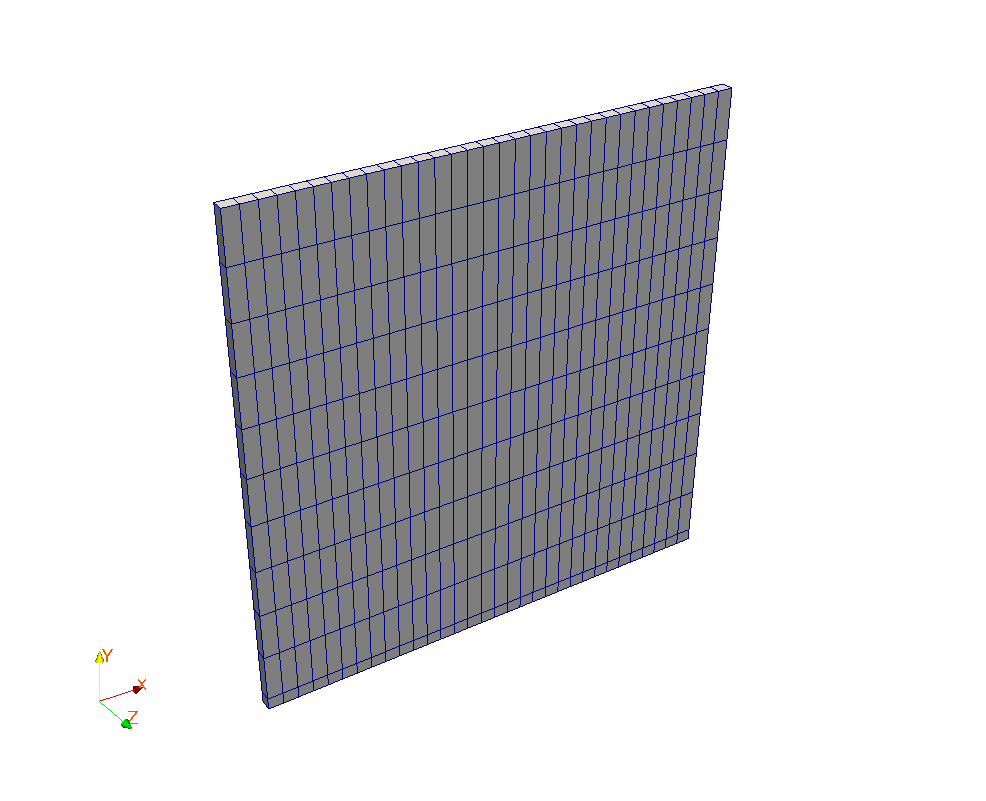11. N modeling#
11.1. Characteristics of modeling#
The modeling is 3D, the frame is represented by a solid of almost rigid material.
11.2. Characteristics of the mesh#

Number of knots: 858
Number of meshes and types: 320 HEXA8 for the plate and 32 HEXA8 for the frame.
11.3. Tested sizes and results#
First calculation (controlled geometric update, formulation “CONTINUE”, solver “MULT_FRONT”)
Identification |
Reference type |
Reference value |
Tolerance |
\(\mathit{DX}\) at the point \(A\) instant \(1.0\) |
“SOURCE_EXTERNE” |
2.86E-5 |
5.0% |
\(\mathit{DX}\) at the point \(B\) instant \(1.0\) |
“SOURCE_EXTERNE” |
2.72E-5 |
5.0% |
\(\mathit{DX}\) at the point \(C\) instant \(1.0\) |
“SOURCE_EXTERNE” |
2.28E-5 |
5.0% |
\(\mathit{DX}\) at the point \(D\) instant \(1.0\) |
“SOURCE_EXTERNE” |
1.98E-5 |
5.0% |
\(\mathit{DX}\) at the point \(E\) instant \(1.0\) |
“SOURCE_EXTERNE” |
1,5E-5 |
5,0% |
11.4. notes#
The results obtained are close to the external source to within 5% (code mean). The linear solver has no influence on the results.
The continuous formulation gives results identical to the discrete formulation.
The modeling of the frame by a material that is very stiff in front of the material of the plate gives results equivalent to the case of the rigid frame whose only edge is represented.